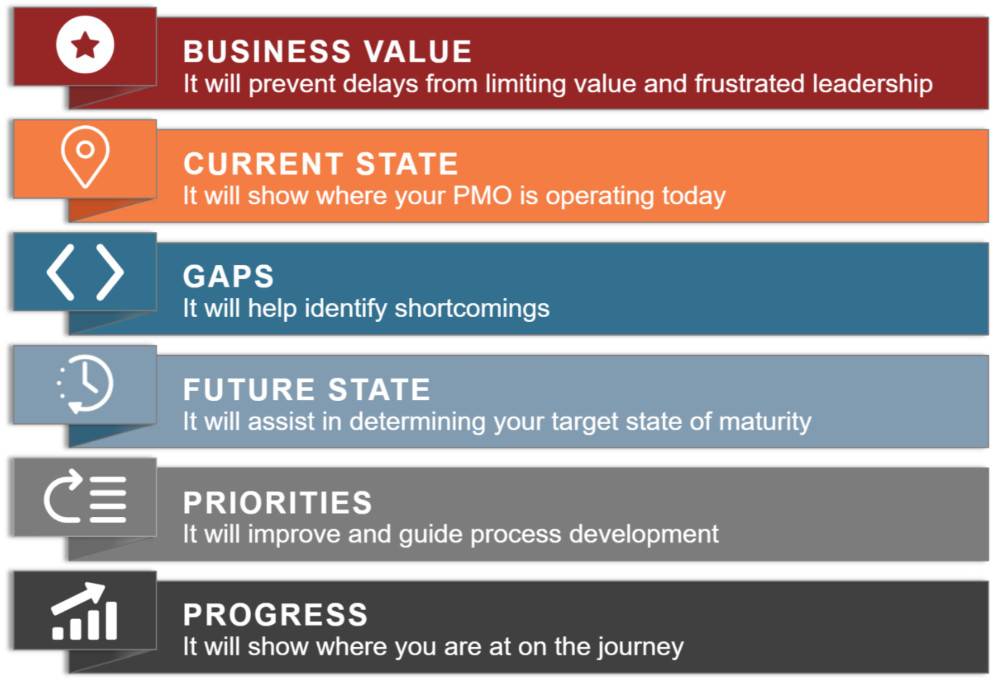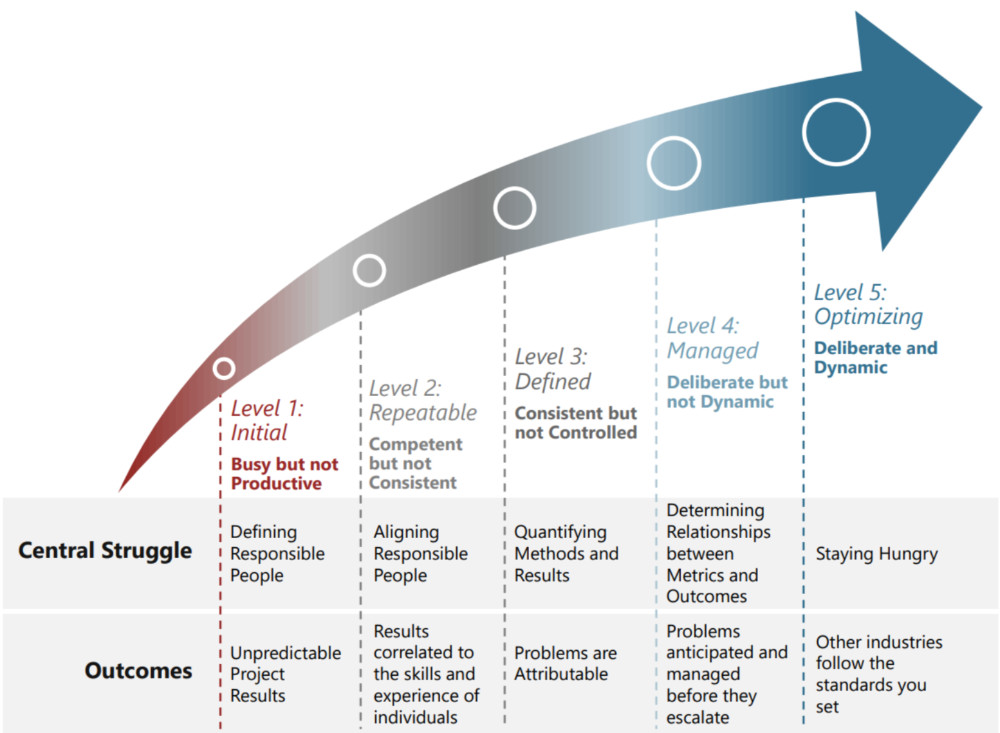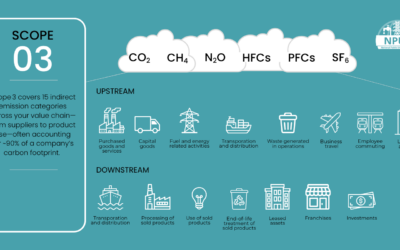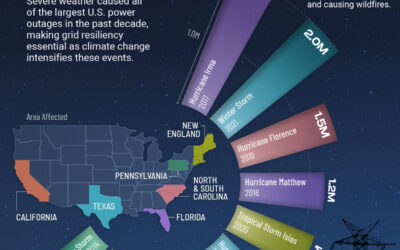Standardizing Project Management Practices Across Functions and Geographies
Within any business, maintaining standardized processes and procedures across organizational groups takes robust governance, diligent communication, and consistent evaluation. An additional challenge for utility companies is that there are a variety of organizational groups with different types of projects and siloed priorities. This, in turn, leads to missed opportunities to integrate information and gather larger-scale insights. By standardizing project management practices, data becomes cohesive, employees appreciate transparency and consistency, and in turn, develop trust in processes and procedures. As consistency grows and project outcomes become more predictable due to aligned data and early identified risk resolutions, trust grows between execution staff and senior leaders.
The utility industry is currently going through one of its most significant inflections. The centralized model for electricity generation and transmission is not flexible enough to accommodate the growing percentage of renewable energy sources. To facilitate a low to zero-carbon future, a decentralized grid is required. Furthermore, with extreme weather across the US, from hurricanes in the southeast, wildfires in the West, and floods in the Midwest, utility assets need to be reinforced to ensure safe and reliable service can be provided to customers. And if this wasn’t sufficient reason, there is also emerging momentum behind proposals to reform the established cost-of-service regulation model that would tie utility revenues to performance in place of capital investment.
Successfully addressing these issues will be a considerable challenge to the business, operations, and project teams within utilities. To mitigate these challenges, change begins at the project level because delivering more consistently at an improved maturity builds the above-mentioned trust in processes and procedures and between all employee levels. Further, the better at delivering projects, the better at maintaining predictable forecasts and deliverables. This reliability, transparency, and trust then support an organization’s ability to effectively plan and implement change across multiple organizational groups without significant resistance. This article discusses strategies for growing the maturity of project delivery within utilities in order to improve the overall response to organizational changes of any scale.
To improve project delivery maturity, the first step is to use maturity models to measure current performance against a standardized framework. Performance can then be ‘benchmarked’ against prior assessments, competitors, or standards in other industries. Having a detailed and quantifiable understanding of current capabilities is a foundational element to growing an organization’s maturity and achieving continuous improvement. Then, utilities can build on this foundation by establishing a realistic roadmap to achieve standardization goals and utilizing change adoption practices to gain staff buy-in.
Increasing standardization also increases the flexibility of staff within a project organization. Utilities are such complex organizations that staff will, at times, be rotated to diversify their experience and prepare them for increasingly senior leadership positions. While beneficial for the organization in the long term, this approach introduces short term challenges of a rotating cast of staff delivering critical projects. Standardizing project delivery processes and procedures will allow for quicker transition between roles for new staff and minimize the short-term impacts on projects.
We also advocate for utilities to ensure there are clear career paths within project delivery groups so that staff who find a passion for projects have the opportunity to build a rewarding career. By developing a path for someone to improve skillsets within their own group and discipline, you can
maintain and improve talent and best practices. No matter the determined priorities of the business, throughout this entire standardization process, be sure to avoid the common pitfall of improperly resourcing the improvement efforts. The value will outweigh the cost and time required if done correctly.
Benefits of Improved Data for Forecasting
Diving deeper, the benefits of standardization across many aspects of a business will positively impact project success. Standardizing the way projects are planned, measured, and delivered will improve cost and schedule certainty. Projects will create more consistent data that can be used across the portfolio to inform more realistic forecasts and permit more granular variance analysis. In turn, these variance analyses will continue to build a repository of data that can be used to continuously improve forecasts. Further, standardizing data and achieving reliable, consistent planning will provide schedule certainty and allow timely risk mitigations. This will reduce project schedule delays, which in turn will allow the business to capture more assets within the regulatory window and incorporate them into the rate base for the coming year. Improving the reliability of project forecasts, risk assessments, and schedules, all flows up to improve the reliability of earnings and reporting communicated to investors and build trust with lenders.
A further benefit relates to improved safety. Utilities undertake projects to improve the safety and reliability of services provided to their customers. If a portfolio of projects is not executed in full, on time, and on budget, customers suffer. While impacts may not be immediate, deferred maintenance work is frequently cited as a contributing factor for outages and incident investigations.
Managing large and diverse portfolios of projects while minimizing the impact on day-to-day operations and maintaining a safe and reliable grid is challenging. Doing so while navigating a complex assortment of budgets, competing priorities, and resource and schedule constraints increases the challenge by magnitudes. Detailed processes and procedures, diligently followed by project teams, ensure that project management principles are followed. High-quality processes streamline decision-making, promote transparency, and result in safely executed work and continued safe and reliable operations. The way utilities make these decisions at every level determines whether the right projects will be executed and how successful these projects will be. Successfully executing these accurately prioritized projects makes a significant contribution to the safe and reliable operation of the grid and reduces the risk of incidents.
Benefits of a Maturity Model
As the rate of change experienced by the utility industry accelerates, so do the benefits of growing the maturity of your project delivery organization. Our Project Delivery Maturity Model can help you prioritize the improvements that will eliminate the inconsistencies that reduce the efficiency of your organization, delay projects, and over-run budgets. The model comprises seven modules covering Cost Management, Schedule Management, Risk Management, Portfolio Management, Resource Management, Scope & Change Management, and Document Control. Each module contains a detailed description of the characteristics of each maturity level across core process groups, organizational factors, and systems and tools. Each maturity level is also described by business outcomes and a ‘Central Struggle,’ which describes the principal challenge organizations must overcome to increase the sophistication of their project delivery.
With this model, we can deliver detailed assessments to help your organization make impactful improvements. By benchmarking the as-is state and highlighting differences in maturity levels between different teams and functions, our comprehensive assessment allows us to clearly identify the issues holding back an organization’s potential.
Based on the 15 years of project management best practices distilled into the model, our experienced consultants will create detailed and executable roadmaps to drive your organization to achieve project delivery goals. We will collaborate with business leaders to prioritize the areas where improvement initiatives will deliver the most value and accelerate to achieve standardization.
Our Models Improve Management Maturity by Delivering:

Our Maturity Model can provide clear steps toward a more productive and standardized organization. If you have any questions regarding our process improvement practices or maturity models and assessments, please reach out to Gerhard Baumann at g.baumann@motive-power.com.




